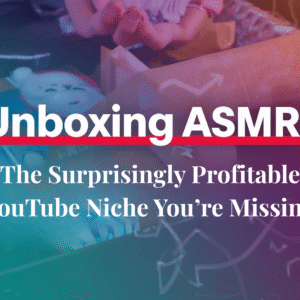Affiliate marketing is basically a way to earn commission by promoting someone else’s product or service. If you’re browsing the web and see a blog recommending a next-level cool kitchen gadget with a link to buy it, there’s a good chance the writer will make a bit of money if you end up making a purchase. This model is one of the oldest forms of digital marketing, and today it’s easier than ever for beginners to get involved.
Affiliate Marketing in a Nutshell
Affiliate marketing lets you make money by recommending products or services and earning a cut when people buy through your referrals. Most big online stores or companies have affiliate programs, so there’s a ton of choice. Instead of creating your own products, you focus on building content, attracting an audience, and connecting readers with things they might need.
This approach is popular with bloggers, YouTubers, social media influencers, and website owners. Pretty much anyone with an online presence can try out affiliate marketing; it doesn’t take a fancy setup or huge budget. According to a Statista report, affiliate marketing spending in the U.S. alone reached over $8 billion in 2022, showing that this field isn’t going anywhere. There are opportunities across almost every niche imaginable, from personal finance and wellness to tech gadgets and home decor, so you can always find something that matches your interests or expertise.
Turn Your Passion into Earnings
Get the Tools, Training and Support you need. All in One Place
Join a a Vibrant and Global Community of
Marketers and Entrepreneurs from Around the World
How Does Affiliate Marketing Work?
The system is straightforward. Here’s what usually happens:
- Pick an Affiliate Program: You sign up with a business or an affiliate network (like Amazon Associates or ShareASale).
- Get Special Links: You receive custom links that track visitors who click through from your content.
- Promote Products: You feature these links on your website, blog, email newsletter, or social media.
- Earn Commission: When someone clicks the link and makes a purchase, you get a commission, usually a small percentage or a flat fee.
This means you don’t have to handle inventory, shipping, or customer service. Your role is to connect interested people with things they’re likely to buy. Over time, learning about tracking analytics and refining your strategies can help you figure out which promotions work best for your audience, making your efforts more successful.
Types of Affiliate Marketing Programs
There are a few different kinds of affiliate programs you might run into, and each one works a little differently. Here’s a quick rundown:
- Paypersale: You earn a cut every time someone buys the product through your link.
- Payperclick: You get paid each time someone clicks your affiliate link, even if they don’t end up buying. These are less common but good for hightraffic sites.
- Payperlead: You earn a commission when someone does something specific, like signing up for a newsletter or creating a free account.
The paypersale approach is by far the most common in affiliate marketing, especially for smaller publishers and beginners. Some hybrid programs mix in bonuses or incentives, so there’s flexibility depending on what you promote and how your audience responds. As you gain experience, exploring networks that cover digital products, software, or online courses can often result in higher commission rates compared to physical products.
Getting Started with Affiliate Marketing
Starting out with affiliate marketing is surprisingly approachable. Here are some steps I find really helpful for beginners:
- Choose Your Niche: Pick a topic you know something about or are genuinely interested in. This could be anything from home gardening to video games.
- Build Your Platform: Set up a blog, website, YouTube channel, or any online space where you’ll share your content.
- Sign Up for Affiliate Programs: Most programs are free to join and only take a few minutes to apply.
- Start Creating Content: Write reviews, comparison posts, tutorials, or videos that naturally incorporate your affiliate links.
- Focus on Trust: Be honest about what you recommend and explain why it’s useful. People can usually spot when you’re just trying to make a sale.
Consistency and patience are key here. Few people see big profits right out of the gate, but small, steady steps add up over time. Regularly updating your site and engaging with your audience can set you apart from those who give up too quickly. If you keep learning about your chosen industry and making your content more useful, people are more likely to return and trust your recommendations.

Affiliate Marketing Terms Worth Knowing
This area does have its own lingo, so I’ve put together some basic terms you’ll probably bump into early on:
- Affiliate: That’s you, the person doing the promoting.
- Merchant: The business selling the product.
- Affiliate Link: A unique URL that tracks your referrals.
- Commission: The money you earn from a successful referral.
- Cookie Duration: How long your referral link stays active. If someone clicks your link but waits a week to buy, you still might get paid, depending on the program’s cookie window.
Pros and Cons of Affiliate Marketing
Affiliate marketing sounds pretty great, and it is, but there are also some things to keep in mind. Here’s a quick list based on my own experiences and what other marketers often point out:
- Pros:
- Low upfront cost; starting a website or YouTube channel isn’t too pricey.
- No need to create your own products or deal with shipping returns.
- Flexibility to work at your own pace, from anywhere.
- Potential to earn passive income if your content keeps bringing in visitors.
- Cons:
- Income is unpredictable, especially at first.
- Success often takes months, not days.
- Competition can be tough in popular niches.
- Some affiliate programs have strict rules about how you can promote products.
Additionally, while affiliate marketing can give a boost to your income, it helps to treat it like any other online business: know the basics of online marketing, be aware of changing rules, and keep learning from both your own experiences and what other successful affiliates do right.
Common Challenges Beginners Face
Just like with anything new, there are some hurdles to get over when you’re starting with affiliate marketing. Here’s what you might come across:
- Choosing the Right Niche: Some beginners pick niches that look profitable but don’t really interest them, which makes creating content a chore. Sticking with what you enjoy keeps things sustainable longterm.
- Building Traffic: Search engine optimization (SEO), regular content, and connecting with your audience are important for getting readers who might click your links. Building backlinks and collaborating with others in your field can help bring in visitors faster.
- Staying Genuine: If your audience feels like you’re just pushing products for a quick buck, they probably won’t click or come back. Being transparent, sharing real stories and even your own missteps, helps build credibility.
- Understanding Affiliate Requirements: Different programs can have different rules, so paying attention to the details is pretty important. For example, some programs won’t let you use paid ads, or they might only pay out over a certain threshold. Always read and double-check the terms before you start promoting.
Building Traffic and Trust
Getting visitors is step one, making sure they trust you is step two. High quality, honest content is the secret sauce. Answer reader questions, show real pros and cons, and only link to things you’d actually use yourself. Search engines pick up on genuine, useful information; over time your site will probably rank higher just by being helpful. Guest posting on related blogs, sharing useful tips in niche forums, and participating in online discussions can also boost your authority and attract readers who appreciate your honest take.
Dealing with Slow Results
Most people don’t strike it rich in their first month. Growth in affiliate marketing can be slow but steady for those who keep at it. I recommend celebrating small wins along the way, like your first sale, your first 100 visitors, or landing a spot on page one of Google for a target keyword. This mindset keeps your motivation up. Keeping an eye out for seasonal trends, like holiday shopping or back to school, helps you map out timely content ideas that can boost traffic and sales during those periods.

Cool Strategies That Help You Stand Out
Affiliate marketing isn’t just about slapping links everywhere. Here are some strategies that can help you get better results and keep things fun:
- Write InDepth Product Reviews: Share your own thoughts and, if you can, firsthand experiences. People trust real reviews over sales pitches.
- Make Comparison Posts: Help readers pick the best option by comparing products side by side, which can be really useful when shopping online.
- Create Tutorials: Show how to use a product or solve a problem. These posts often attract visitors who already want to buy, so your links are more likely to convert.
- Use Social Media: Share your top tips, mini reviews, or recent finds in Facebook groups, Twitter threads, or Instagram posts.
- Send Newsletters: If you have an email list, send helpful content and highlight deals. Just don’t overdo it, people appreciate value more than constant sales pitches.
Where Do You Find Affiliate Programs?
You can stumble upon affiliate programs almost everywhere. A few big places worth checking out:
- Amazon Associates: Super popular and covers pretty much anything you can buy on Amazon.
- ShareASale: A network with thousands of merchants in tons of niches.
- Commission Junction (CJ): Another large network, popular for physical and digital products.
- Direct Merchant Programs: Some brands, like Bluehost or Target, run programs right from their websites.
A quick Google search for “[your niche] + affiliate program” will usually lead you to even more options. Additionally, joining online marketing forums can introduce you to hidden gems where the competition isn’t as fierce.
Looking for a training platform that actually works?
I’ve put together a full walkthrough of the affiliate marketing training that helped me build everything I have today. It’s practical, beginner-friendly, and you can try it out for free to see if it suits you.
Take a look at my honest review and see if it’s the right fit for you.
Frequently Asked Questions
Here are a few common questions I get from folks who are just getting started:
Question: How much can beginners realistically earn from affiliate marketing?
Answer: Earnings range from a few dollars a month up to a fulltime income. Most beginners see slow growth, but dedicated effort can absolutely pay off with time and persistence.
Question: Are there any upfront costs to worry about?
Answer: Most affiliate programs are free to join. You’ll probably need to spend a bit on things like a website domain, hosting, or basic marketing tools, but costs are usually low. Many creators start out using free blogging platforms or social channels before committing to more advanced setups.
Question: Do I need a website or can I use social media for affiliate links?
Answer: You can use either! Websites offer a bit more flexibility and authority, but social platforms like YouTube, Instagram, and TikTok are great too; just check each affiliate program’s rules first. Remember, building an email list from your chosen platform can also give a boost to your longterm reach.
Final Thoughts
Affiliate marketing is a pretty straightforward way to start earning online, and you don’t need a tech background to give it a shot. Picking the right niche, building trust, and delivering solid content can lead to steady growth and extra income over time. Anyone can get started, so if you’re curious, why not give it a go? By learning from your own results, sticking with honest recommendations, and keeping up with online trends, you might surprise yourself with how much you can achieve in this field.





